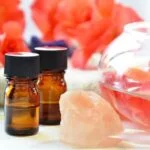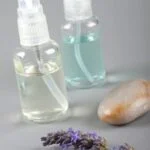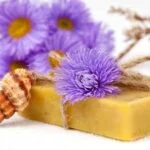Aromatherapy has long been revered for its numerous health benefits, and one of the most popular methods of enjoying these benefits is through the use of an aromatherapy inhaler. These pocket-sized devices are designed to allow you to conveniently inhale the therapeutic properties of essential oils, providing a soothing and invigorating experience wherever you go.
In this article, we will delve into the world of aromatherapy inhalers, exploring their origins, components, and how they work. We will also discuss the remarkable benefits they offer for stress relief, relaxation, sleep aid, and mood enhancement. Additionally, we will explore different types of essential oils commonly used in inhalers and provide guidance on how to use them effectively.
Whether you are new to aromatherapy or a seasoned enthusiast looking to explore new avenues for self-care and well-being, understanding aromatherapy inhalers is a crucial first step. Read on to discover how these small but mighty devices can become an invaluable tool in your journey towards holistic health and wellness.
History of Aromatherapy Inhalers
Aromatherapy inhalers have a long history that dates back centuries. Their use can be traced back to ancient civilizations such as Egypt, Greece, and China, where they were employed for their therapeutic benefits. In these cultures, aromatic plants and their extracts were highly valued for their healing properties, and inhalation was one of the primary methods used to harness their benefits.
In ancient Egypt, for example, inhalation therapy was believed to have powerful effects on both the physical and spiritual well-being. Essential oils were used in religious ceremonies, healing rituals, and even during the embalming process. The Egyptians understood the potent effects of inhaling the fragrance of aromatic plants and developed techniques to extract essential oils for this purpose.
Similarly, in traditional Chinese medicine, aromatherapy inhalation has been used for centuries as part of a holistic approach to health and wellness. It is believed that inhaling certain scents can stimulate specific energy pathways in the body and restore balance. Various herbs and botanicals were utilized in different combinations to address specific health concerns.
Throughout history, aromatherapy inhalers have been utilized by various cultures around the world for a range of purposes. In ancient Greece, physicians such as Hippocrates recognized the benefits of inhaling aromatic vapors for treating respiratory conditions. They would use cones made from clay or other materials soaked with medicinal herbs and oils.
As time progressed, so did the design and functionality of aromatherapy inhalers. Today’s modern inhalers are portable and convenient options for individuals seeking natural remedies. They offer an effective way to harness the therapeutic properties of essential oils through direct inhalation without any complex procedures or equipment.
Components and Design of Aromatherapy Inhalers
Aromatherapy inhalers are simple yet effective tools that provide a convenient way to experience the benefits of essential oils. In this section, we will explore the components and design of aromatherapy inhalers, highlighting their importance in delivering therapeutic effects.
Components
An aromatherapy inhaler is composed of several key components that work together to create an enjoyable and efficient experience. The main parts include a wick, a sleeve or casing, and a cap. The wick is where the essential oil blend is applied and acts as a carrier for the aroma. It is important to choose a high-quality wick material that can effectively absorb and release the essential oils.
The sleeve or casing of an inhaler helps protect the wick from dirt, dust, and damage, ensuring its longevity. Additionally, it provides a barrier between your skin and the oils while also being comfortable to hold during use.
Lastly, the cap serves as both a protective cover for the wick and as a seal to preserve the aroma within the inhaler when not in use. It is crucial to have an airtight cap to prevent leakage and maintain the freshness of your essential oil blend.
Design
Aromatherapy inhalers come in various designs to suit different preferences and needs. Some common designs include twist-up inhalers, nasal inhalers, pendant necklaces with refillable vials, or reusable personal diffusers.
Twist-up inhalers are popular choices because they are compact and easy to use on-the-go. They usually consist of multiple parts that can be twisted open for accessing the wick or blending different essential oils together.
Nasal inhalers are specifically designed for direct nasal application by inserting them into your nostrils. This design allows for more targeted aromatherapy for respiratory support or relief from congestion.
Pendant necklaces with refillable vials offer fashionable options for wearing your aromatherapy inhaler as a piece of jewelry. These designs are often made from hypoallergenic materials and can hold a larger amount of essential oil blend.
Reusable personal diffusers provide another option for aromatherapy inhalation. These diffusers typically use disposable pads or cartridges, allowing for a wide variety of essential oil blends to be used interchangeably.
How Does an Aromatherapy Inhaler Work?
Aromatherapy inhalers are small devices that allow users to inhale the therapeutic scents of essential oils. But how exactly do these inhalers work to deliver the benefits of aromatherapy? In this section, we will delve into the science behind aromatherapy inhalers and explain how they interact with our olfactory system.
When we inhale through an aromatherapy inhaler, the aromatic molecules from the essential oils enter our nose and travel to the olfactory receptors in our nasal cavity. These receptors are specialized cells that can detect specific scents and send signals to our brain, which then processes these signals and triggers various physiological and emotional responses.
One key factor in the efficacy of aromatherapy inhalers is their direct delivery method. Unlike other forms of aromatherapy, such as diffusers or topical application, inhalers allow for a more concentrated exposure to the therapeutic properties of essential oils. This is because when we inhale through an inhaler, the scent molecules bypass several filtration systems in our body and go straight to the olfactory receptors, resulting in faster absorption.
Furthermore, direct inhalation has been shown to have a profound impact on our emotions and mood regulation. The olfactory system is closely connected to the limbic system in our brain, which is responsible for regulating emotions and memory. When we inhale certain scents through an aromatherapy inhaler, it can trigger positive emotional responses and help promote relaxation, reduce stress, improve sleep quality, and even boost cognitive function.
| Key Points |
|---|
| – Aromatherapy inhalers deliver aromatic molecules directly to olfactory receptors |
| – Inhalers offer a more concentrated exposure compared to other methods |
| – Direct inhalation through inhalers can have a profound impact on emotions and mood regulation |
Benefits of Using an Aromatherapy Inhaler
Aromatherapy inhalers offer a range of benefits that make them a popular choice for those seeking natural remedies and therapeutic solutions. Unlike other methods of aromatherapy, such as diffusers or topical application, inhalers provide a quick and portable way to experience the benefits of essential oils anytime, anywhere. In this section, we will explore the advantages of using inhalers over other aromatherapy methods and discuss their efficacy in relieving stress, promoting relaxation, aiding in sleep, and boosting mood.
1. On-the-Go Use:
Aromatherapy inhalers are small and compact, making them ideal for use while on the go. Whether you’re at work, traveling, or simply out and about, you can easily carry an inhaler with you in your purse or pocket. This allows you to enjoy the benefits of essential oils wherever and whenever you need them most. The convenience of inhalers makes it easier to incorporate aromatherapy into your daily routine.
2. Quick Relief:
One of the key advantages of using an aromatherapy inhaler is its ability to provide quick relief from various conditions. When inhaling the essential oils directly through the olfactory system, they bypass digestion and absorption processes that may delay their effects. Instead, the molecules quickly reach the brain’s limbic system via the olfactory nerves, triggering a rapid response within the body. This can lead to almost instant relief from symptoms such as stress, anxiety, headaches, fatigue, or low mood.
3. Emotional Support:
Aromatherapy inhalers are particularly effective in providing emotional support due to their direct impact on the limbic system – the part of our brain responsible for emotions and memory. By inhaling certain essential oils known for their calming properties, such as lavender or chamomile, individuals can experience feelings of relaxation and tranquility.
On the other hand, stimulating oils like peppermint or citrus blends can help uplift mood and boost energy levels. This emotional support makes inhalers a valuable tool for managing stress, promoting relaxation, improving sleep quality, and enhancing overall well-being.
By harnessing the power of essential oils in a compact and convenient format, aromatherapy inhalers offer numerous benefits for those seeking natural remedies and therapeutic solutions. They provide quick relief, on-the-go use, and emotional support to improve both physical and mental health. In the next section, we will explore the different types of essential oils commonly used in inhalers and their respective aromatherapeutic properties and benefits.
Different Types of Essential Oils for Inhalers
Aromatherapy inhalers are a popular and convenient method for experiencing the benefits of essential oils. By inhaling the aromatic molecules, our olfactory system sends signals to the brain, promoting various therapeutic effects. When it comes to choosing essential oils for your inhaler, there are numerous options available. Here is a comprehensive list of some commonly used essential oils along with their respective aromatherapeutic properties and benefits:
- Lavender Essential Oil: Known for its calming and relaxing properties, lavender essential oil is widely used to relieve stress, anxiety, and promote restful sleep.
- Peppermint Essential Oil: With its invigorating and refreshing scent, peppermint essential oil can enhance focus, improve mental clarity, and provide relief from headaches or congestion.
- Eucalyptus Essential Oil: A popular choice for respiratory support, eucalyptus essential oil helps clear the airways and provides relief from coughs or sinus congestion.
- Lemon Essential Oil: Known for its uplifting and energizing properties, lemon essential oil can improve mood, boost concentration, and offer a refreshing aroma.
- Tea Tree Essential Oil: Renowned for its antiseptic and antibacterial qualities, tea tree essential oil is often used to support immune health and treat skin conditions such as acne or fungal infections.
- Bergamot Essential Oil: This citrusy oil has mood-enhancing properties that can alleviate anxiety, depression, and promote relaxation.
- Rosemary Essential Oil: With its stimulating and revitalizing effects, rosemary essential oil can enhance memory retention and mental alertness while reducing fatigue.
- Chamomile Essential Oil: Often used to induce feelings of calmness and relaxation, chamomile essential oil can help with insomnia or alleviate symptoms of stress-related disorders.
- Frankincense Essential Oil: Known for its grounding qualities, frankincense essential oil is commonly used in meditation practices to promote feelings of peace and tranquility.
When creating your own blends, you can combine different essential oils to create a personalized aroma that suits your specific needs or preferences. For stress relief, consider blending lavender, bergamot, and chamomile. If you need an energy boost, a combination of peppermint, eucalyptus, and lemon can provide an invigorating scent. Experimentation with different oils will help you discover your favorite combinations.
It’s important to note that essential oils are highly concentrated substances and should be used with caution. Always follow recommended dilution guidelines and consult a healthcare professional if you have any underlying health conditions or concerns. With the wide range of essential oils available, there is something for everyone to enjoy the therapeutic benefits of aromatherapy inhalers.
How to Use an Aromatherapy Inhaler
Using an aromatherapy inhaler is simple and convenient, making it a popular choice for incorporating aromatherapy into your daily routine. To ensure you are using your inhaler correctly and effectively, follow these step-by-step instructions:
Prepare your inhaler
- Before using your inhaler for the first time, remove the cap and take a moment to familiarize yourself with its components: the outer casing, inner tube, wick, and cap.
- Carefully remove the inner tube from the casing by gently pushing it out from the bottom.
- Unscrew the cap from the inner tube.
- Take out the cotton wick and apply 5-10 drops of your chosen essential oil or blend onto it. Make sure to choose high-quality essential oils that are pure and free of additives.
Assemble your inhaler
- Insert the wick back into the inner tube and screw the cap back on securely.
- Place the inner tube back into the outer casing, ensuring it fits snugly.
Inhalation technique
- Hold one end of the inhaler against one nostril while closing off the other nostril with your finger or by gently pressing against it.
- Take a slow, deep breath in through your nose while slowly counting to five.
- Hold your breath for a few seconds to allow for optimal absorption of aromatic molecules.
- Exhale slowly through your mouth.
Repeat as desired
- Repeat steps 3 for each nostril as needed or until you feel the desired effects. It’s important not to overuse an inhaler as this can lead to sensory adaptation over time.
To maximize the benefits of using an aromatherapy inhaler:
- Store your inhaler in a cool, dry place when not in use to preserve the integrity of the essential oils.
- Avoid exposing your inhaler to direct sunlight or high temperatures, as this can degrade the quality of the oils.
- Replace the cotton wick every few weeks or whenever you decide to switch to a different essential oil blend.
Remember, using an aromatherapy inhaler is a personal experience, and it may take some experimentation to find the perfect essential oil blend and frequency of use that works best for you. If you have any concerns or questions about using an inhaler, consult with a qualified healthcare professional or aromatherapist for personalized guidance and recommendations.
Safety Considerations and Precautions
When it comes to using aromatherapy inhalers, it’s important to keep safety considerations and precautions in mind. While these inhalers offer a natural and effective way to enjoy the benefits of essential oils, there are some guidelines that should be followed to ensure a safe and positive experience.
Firstly, it is crucial to read the instructions provided with the aromatherapy inhaler. Each brand or type of inhaler may have specific recommendations for use, such as the number of inhalations per session or the maximum duration of use. Following these guidelines can help prevent excessive exposure to essential oils.
It is also important to note that not all essential oils are suitable for everyone. Some oils may cause allergic reactions or sensitivities in certain individuals. Before using an aromatherapy inhaler, it is recommended to perform a patch test by applying a small amount of diluted oil on the inside of your wrist and wait for 24 hours to see if any adverse reactions occur.
Furthermore, certain precautions should be taken during pregnancy, as some essential oils may have contraindications or effects on hormonal balance. It is advisable to consult with a healthcare professional before incorporating any new form of aromatherapy into your routine during pregnancy.
In addition, proper dilution ratios should always be followed when using essential oils in aromatherapy inhalers. Undiluted essential oils can be too potent and cause skin irritations or other adverse effects. It is best practice to dilute essential oils with a carrier oil before adding them to the inhaler.
Lastly, keep in mind that essential oils are highly concentrated plant extracts and should be treated with care. Avoid contact with sensitive areas such as eyes or mucous membranes, and make sure your hands are clean when handling the aromatherapy inhaler.
By following these safety considerations and precautions, you can enjoy the therapeutic benefits of aromatherapy inhalers safely and effectively. Remember that everyone is unique, and what works for one person may not work for another, so it’s important to listen to your body and adjust accordingly.
| Safety Considerations and Precautions |
|---|
| – Read the instructions provided with the inhaler |
| – Perform a patch test before use |
| – Consult a healthcare professional during pregnancy |
| – Follow proper dilution ratios |
| – Handle essential oils with care |
Conclusion
In conclusion, aromatherapy inhalers are a convenient and effective method of enjoying the therapeutic benefits of essential oils. These inhalers have a long history dating back centuries and have evolved into various designs to suit different preferences. The science behind how inhalers work lies in the interaction between the olfactory system and the essential oils, making direct inhalation an efficient way to experience the benefits quickly.
Using an aromatherapy inhaler offers numerous advantages over other methods of aromatherapy. Their compact size makes them perfect for on-the-go use, allowing individuals to easily incorporate aromatherapy into their daily routines. Inhalation therapy has been shown to effectively relieve stress, promote relaxation, aid in sleep, and boost mood. With a wide range of essential oils available for use in inhalers, it is possible to create personalized blends that cater to specific needs.
When using an aromatherapy inhaler, it is important to follow safety considerations and precautions. This includes being mindful of any age restrictions or pregnancy precautions associated with certain essential oils. Diluting essential oils properly and seeking advice from a healthcare professional before beginning any aromatherapy regimen is recommended.
For further information on aromatherapy inhalers and how to maximize their benefits, there are numerous resources available online or through reputable books on this subject matter. With proper knowledge and guidance, you can embark on a journey towards improved well-being and a greater sense of inner balance through the power of aromatherapy.
Frequently Asked Questions
What is aromatherapy inhaler used for?
Aromatherapy inhalers are used for inhaling essential oils to promote various therapeutic effects. The inhaler typically consists of a small tube that holds a cotton wick infused with essential oils.
When the user breathes in through the inhaler, they directly inhale the aroma of the essential oil, allowing its properties to affect their mind and body. Aromatherapy inhalers can be used for relaxation, stress relief, improved sleep, mental clarity, mood enhancement, or even targeted relief from headaches or congestion.
Is it safe to use an aromatherapy inhaler?
When used properly and with caution, aromatherapy inhalers are generally considered safe. Essential oils used in these inhalers are highly concentrated plant extracts and should be handled responsibly to avoid any adverse reactions.
It is important to follow recommended guidelines for dilution and usage specific to each individual oil as some oils may cause irritation or sensitization if used incorrectly. Pregnant women, individuals with respiratory conditions, sensitive skin, or allergies should exercise extra caution when using aromatherapy inhalers and consult with a healthcare professional if unsure.
What is aromatic inhaler?
An aromatic inhaler is essentially another term for an aromatherapy inhaler or an essential oil inhaler device. It is a pocket-sized tool that allows individuals to enjoy the benefits of aromatherapy on-the-go. The compact design makes it convenient to carry around and use whenever needed.
Aromatic inhalers usually consist of three main parts: the outer casing, which protects the inner components; an absorbent wick saturated with essential oils; and a tube that allows users to breathe in the aroma easily without direct contact with their skin or eyes. These devices provide a portable way to experience the therapeutic effects of essential oils in situations where diffusers or other methods may not be feasible or practical.

Are you looking for a natural way to improve your health and wellbeing?
If so, aromatherapy may be the answer for you.





